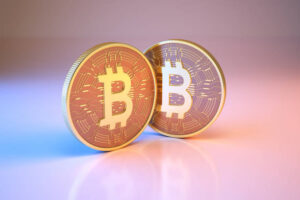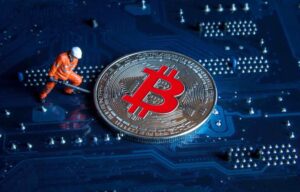[ad_1]

- Bitcoin BRC-20 tokens have skyrocketed over the previous few days, with their mixed market worth rising to over $923 million as of 8 May, 2023.
- Mintlayer CEO Enrico Rubboli has highlighted among the flaws and points plaguing the BRC-20 token normal.
- Apart from not aligning with the “axioms of the core Bitcoin community,” flaws and points imply customers are prone to be rug pulled.
Crypto news this week certainly has the skyrocketing transactions of BRC-20 tokens as one of many causes the Bitcoin community skilled large congestion amid rising charges.
As CoinJournal highlighted on Monday morning, the crypto market was down as Binance halted BTC withdrawals amid the community congestion. Some of the trending BRC-20 tokens embody ordi, pepe, meme, piza and domo.
Enrico Rubboli, the CEO of Bitcoin sidechain Mintlayer, says that whereas BRC-20 tokens proceed to create a frenzy, there are flaws and different points that plague the tokens and offshoot decentralised purposes that attempt to join with sensible contracts.
What are BRC-20 tokens?
BRC-20, or “Bitcoin Request for Comment,” is a token normal for Ordinals. The tokens enable for the issuance and switch of fungible tokens on Bitcoin and hit the market quickly after the mainnet launch of the Ordinals Protocol.
With BRC-20 tokens, one can etch digital artwork references into small Bitcoin transactions. The tokens are a creation of a pseudonymous crypto developer often called Domo.
According to market data for the token class, the mixed worth of all 11,705 BRC-20 tokens was $923 million as of Monday, 8 May 2023.
BRC-20 tokens tormented by velocity and transaction prices points
Among the insights Rubboli shared with CoinJournal on Monday is that whereas individuals pour BTC into minting BRC-20 tokens, there’s a necessity to grasp that the expertise behind these property is “heavily flawed.” He additionally notes that BRC-20 tokens aren’t “in line with the axioms of the core Bitcoin community.”
Rubboli stated that among the points at present plaguing the tokens and offshoot dApps inside the ecosystem embody velocity, transaction prices and safety.
On the problem of velocity, he explains that transactions have to attend for Bitcoin block affirmation earlier than settlement, which when mixed with community congestion, has resulted in customers ready hours for transactions to clear.
Mintlayer CEO says BRC-20 tokens are potential rug pulls
According to Rubboli, the usage of token bridges and wrapped BTC may expose customers to exploits, with DeFi bridges seeing greater than $1.4 billion misplaced to hackers that focused crypto bridges in 2022. Rubboli believes your complete idea for BRC-20 was designed to confuse and mislead potential buyers, with the creators leeching off the favored ERC-20 token normal.
Saying this may very well be a possibility for scams, he added:
“The entire ecosystem was set up to be confusing and misleading. BRC-20 was chosen not because it was the 20th proposed standard, but to leech off the popularity of Ethereum’s ERC-20 token. The developers of the standard and the tools are not affiliated with Bitcoin, they are anonymous, and their software has not been thoroughly tested in this application.”
Besides, the a whole bunch of BRC-20 tokens may not simply be completely nugatory, but in addition minted particularly to rug pull later buyers. BRC-20 token normal creator Domo has beforehand warned of the shortcomings of the software program, together with minting balances to middleman wallets.
Regulatory points additionally come up, with the minting of BRC-20 tokens prone to result in regulatory issues round commingling of user-generated tokens with BTC.
“If users mint unregulated securities, it could expose the Bitcoin blockchain to further regulatory scrutiny, which in turn exposes every BRC-20 to regulation due to 1 bad actor. A layer 2 solution fixes this problem as tokens are not commingled with Bitcoin,” he opined.
A layer 2 answer is a protocol that runs on high of a layer 1 blockchain, as an example Bitcoin or Ethereum. The key options that these protocols deliver to the L1 embody improved scalability and privateness amongst others.
In blockchain, frequent layer 2 options embody state channels, sidechains, and zero data roll-ups.
[ad_2]
Source link



